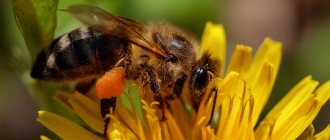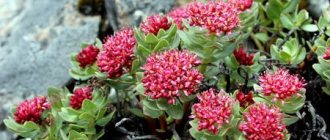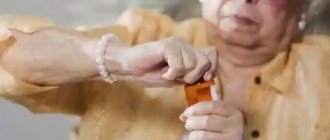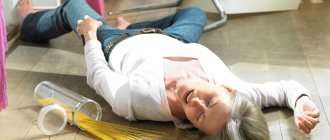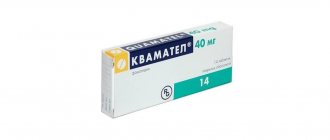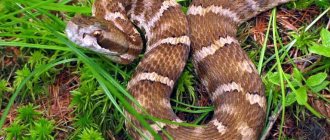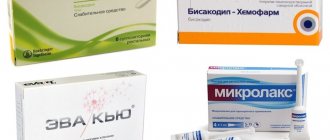General information
Bee stings occur frequently, especially in the warm season.
They are quite painful, and after a bite, redness and swelling appear at the site of the lesion. As a rule, such symptoms soon disappear and the person feels normal. But in some cases, insect bites, particularly bees, can lead to allergic reactions that can be life-threatening. Therefore, it is very important to provide the victim with timely first aid and monitor his condition. And those who are prone to allergic reactions should be given immediate hospitalization. Indeed, sometimes an allergy can develop even after a person is stung by one insect. But multiple bites are especially dangerous. Bee venom, which the insect introduces into the body through its sting, is dangerous for humans. And when attacked by a large number of bees, a general toxic reaction can develop, which is expressed by a significant deterioration in the general condition. Sometimes this condition is deadly. What symptoms can develop from bee stings, and what needs to be done to quickly alleviate the victim’s condition, can be found in this article.
When does a bee attack?
Honey attracts many people. It is hunted by flies, wasps, hornets, as well as bees from other apiaries. Mice and martens love to eat the sweet product. And even a preschooler knows from various fairy tales how the bear loves honey. Naturally, it is impossible to survive in such conditions without effective defensive weapons. Nature has armed these little workers with perfect protection - a sting with poison.
Stinging and destroying, the bee without hesitation rushes into battle, often fatal, with uninvited guests who pose a threat to its family.
Insects, if they are bitten by a bee, die immediately, but the little warrior, which is important, survives. Birds and mice die within 1-2 hours after the attack. Bees also die.
The death of representatives of the bee family when meeting warm-blooded animals is due to the structure of their sting. It is equipped with serrations, like a harpoon. Having pierced the skin of a person or animal, the sting becomes firmly stuck there. The warrior can only fly away by getting rid of her weapon, after which she will inevitably die.
Color. People dressed in dark clothes are attacked by bees many times more often. By the way, this observation is also true for other stinging insects. Therefore, based on thousands of years of experience, beekeepers dress in white clothes, to which these insects react calmly.
Smells. For unknown reasons, bees sting people or animals with a strong odor:
- perfumes (cologne, eau de toilette, perfume);
- tobacco;
- alcohol;
- sweat;
- bee venom
There are numerous cases of horses dying from bee stings when careless owners left them near an apiary or mass collection of nectar. A chain reaction was triggered here. One or more bees stung the animal due to the strong odor of sweat. After the bite, the smell of sweat was mixed with the smell of bee venom, which provoked a massive attack by other representatives of this species. The horse has virtually no chance of surviving the first bite.
Danger to the family. Approaching the apiary, a person begins to pose a potential threat to the inhabitants of the hive. He can destroy their house and take away their honey. In this case, an innate instinct is triggered, aimed at preserving the species. Even at the cost of his life. They attack until the danger disappears.
A bee can also sting if the threat arises for it personally. You should not squeeze this insect with your palms or between your fingers, as it can easily use its weapon. This result is also possible when a bee gets into your hair, if you start to get it out of there out of fear.
There is an opinion among beekeepers that having lost a sting after an attack, a loaded bee will definitely return to the hive to be freed from the bribe. However, such a judgment is not true. Having filled the goiter with nectar, the bee is unable to sting. She simply does not bend her abdomen to attack.
Beekeepers all over the world use this to safely remove frames of honey. By fumigating the hives with smoke, they create the illusion of a fire, to which the inhabitants of the house react adequately. They instantly fill their crops with honey, which will allow them to survive in another place. Naturally, loaded with honey, they cannot sting.
Pathogenesis
Bees have sharp stings that are located on the abdomen - at its rear end. The insect injects poison through its sting, which causes pain, irritation, and sometimes allergic reactions. Unlike other insects, bees leave a sting in the wound. The sting can gradually go deeper on its own and at the same time release poison. That is why it needs to be removed as soon as possible.
Bee venom contains phospholipase A , which produces a hemolyzing effect. red blood cells disintegrate at the site of exposure . Melittin is a linear polypeptide that has toxic effects. Under its influence, edema forms, blood vessels become more permeable, convulsions and coronary disorders develop. Apamin is a powerful neurotoxin that affects the bulbar centers as well as the spinal cord. It may depress breathing. However, if a person is bitten by one insect, then the concentration of the substance is not sufficient to cause pronounced pathological reactions. But with multiple bites, the reaction can be pronounced.
If an allergic reaction develops, it can occur in the form of anaphylactic shock , angioedema, or urticaria .
How to relieve swelling from a bee sting on the second day
If the swelling has not been treated for more than a day, then it will be a little more difficult to quickly get rid of it. Here you will have to use antiallergic drugs in the form of ointments and tablets. Traditional recipes - baths, lotions and the like will also not hurt, but you need to make sure that they do not cause more harm.
Drug treatment
Medicines can be prescribed both local and systemic. They are prescribed based on the presence of a generalized allergic reaction. Doctors prescribe the following types of medications:
- Glucocorticoids.
- Antihistamine tablets.
- Parenteral glucocorticoids.
Classification
Depending on the severity of the process, the condition is divided into several types:
- Mild - only local signs appear, there are no pronounced general symptoms. It is noted after the bite of one or more insects.
- Moderate – characterized by local symptoms, as well as moderate manifestation of general symptoms. Develops as a consequence of the toxic effects of poison. Urticaria may develop , as well as angioedema , which does not affect the airways. Hypersensitivity reactions are possible. The functions of the nervous system are disrupted if a person is bitten by several dozen insects.
- Severe – anaphylactic shock and severe toxic reactions . An allergy to a bee sting can lead to obstruction of the upper respiratory tract. The central nervous system and peripheral nervous system are affected. An allergic reaction most often occurs after a person has been stung by a large number of bees.
Symptoms
The most common symptoms that develop after an insect bite are:
- The appearance of a sharp and burning pain, soon the pain may be replaced by itching.
- Redness of the affected area, while a white dot appears in the center where the sting has penetrated.
- Development of edema.
As a rule, with a single bite, the pain and burning sensation does not last long. Then swelling develops. Redness and swelling disappear after a few days; discomfort may subside a little earlier. The papule persists for about a week. If a bee stings the eye area, the swelling may last longer. blepharitis may also develop . If the poison penetrates the mucous membranes, their pronounced swelling is noted.
If an allergic reaction develops, the following manifestations are added to the main symptoms:
- Very severe swelling in the affected area, which progresses quickly.
- Severe itching and rash all over the body.
- Vomiting, nausea.
- Difficulty breathing - a symptom reminiscent of asthma.
In severe cases, vascular collapse may develop, consciousness is depressed, the functioning of the respiratory center is disrupted, and respiratory activity is weakened.
With urticaria , pink blisters appear on the body, which resemble pimples after being attacked by nettles.
With Quincke's edema, those areas of the body where there is a lot of subcutaneous tissue increase. Damage to the upper respiratory tract area is especially dangerous.
In anaphylactic shock , there is generalized itching of the skin, a sharp drop in blood pressure, chest pain, collapse, and loss of consciousness.
Tests and diagnostics
Bee sting photo
It is usually possible to determine that a person has been bitten by a bee visually. But if we are talking about severe allergic reactions, then you have to call emergency help, whose doctors will examine you and make a preliminary diagnosis.
If necessary, if a person develops severe reactions, additional examinations are carried out.
- Physical blood pressure are measured . The doctor examines the skin to determine whether there are signs of allergies . Listening to the lungs may be performed.
- Laboratory - a general blood test is performed to determine signs of the inflammatory process
- Hardware - its use is advisable only in the development of pronounced systemic manifestations. Ultrasound, radiography, and ECG are used.
Treatment with folk remedies
Those who are looking for an answer to the question of what to do if they are bitten by a bumblebee at home can be advised to use some folk remedies. But this can only be done if the bite of a bumblebee or bee does not cause serious systemic reactions.
If your arm or leg is swollen after a hornet or bee sting, you can remove the swelling using the following methods:
- Honey - it should be applied to the bite site after the sting is removed. Honey activates healing processes.
- Coconut oil – this should be applied to the bandage and secured to the affected area. The oil reduces the severity of swelling and reduces the inflammatory process.
- Lavender oil – the area should be treated with essential oil, which relieves signs of inflammation.
- Baking Soda – Mix baking soda with water to form a thick paste. This product should be applied to the affected area and secured with a bandage. It effectively reduces swelling and itching.
- Parsley or dandelion juice is an effective remedy if there are no medications at hand. Fresh juice should be squeezed onto the wound.
- Vegetable oil - to reduce the severity of irritation, lubricate the bite with olive or sunflower oil.
Clinical researches
Clinical studies have proven the effectiveness, safety and tolerability of the products. The products are suitable for daily care of children's skin with mild to moderate forms of atopic dermatitis and during remission, accompanied by a decrease in the quality of life of patients.
The properties of the products are confirmed by clinical studies, during which it was found that La-Cri cream for sensitive skin:
- reduces itching and irritation;
- relieves skin redness;
- moisturizes and gently cares for the skin.
Based on the results of clinical studies, the product packaging contains information that the creams are recommended by the St. Petersburg branch of the Union of Pediatricians of Russia.
Sources:
- Rodionov A.N., Zaslavsky D.V., Sydikov A.A. Edited by Professor A.N. Rodionova, M.: Border, Dermatology: an illustrated guide to clinical diagnostics according to Professor A.N. Rodionov. — 2021.
- Schneiderman Paul, Grossman Mark, Differential diagnosis in dermatology. Beanom Atlas, 2021.
- Ratner Desiri, Avram M.R., Avram M.M., Procedures in Dermatology. Clinical cosmetology, GEOTAR-Media, 2021.
First aid
If a person is bitten by an insect, you need to follow the following algorithm:
- Find the sting and carefully remove it using tweezers. The sting should not be squeezed out, as such actions lead to the spread of poison.
- Disinfect the bite site using any antiseptic or saline solution (1 teaspoon of salt per glass of water).
- Apply cold - ice, a towel soaked in cold water or a cold heating pad.
- Treat the bite site with ointment.
- Take any antihistamine.
- To drink a lot of water.
If a person experiences a severe allergic reaction, it is important to call an ambulance immediately. The victim should be laid down, covered, and covered with warm heating pads. It is necessary to immediately give him an antihistamine.
If the heart has stopped and there is no breathing, cardiopulmonary resuscitation is performed: cardiac massage, artificial respiration.
What to do at home
Most often, bees sting at the least appropriate moment, when it is not possible to see a doctor right away. It is important to know how to properly administer first aid for a bee sting.
First aid for a bee sting
Algorithm of action in case of a bee sting:
- We take out the sting. Yes, this needs to be done urgently, but not rudely. Preferably using a tool like tweezers, which should be disinfected. You can remove the sting with your fingers, but you need to make sure they are sterile, especially that there is no dirt under the nails. The main thing is not to spread the infection to an already poisoned point.
- Treat the bite site and apply cold water. The affected area of the skin is lubricated with alcohol or peroxide, or a weak solution of potassium permanganate can be used. Next, ice or something colder is applied. These steps will help relieve pain and reduce swelling.
- We give the victim liquid to drink - preferably tea or mineral water without carbon. Replenishing your fluid reserves will ease your general condition.
- If the person bitten suffers from allergies of any kind, he should quickly drink his antihistamine.
- Are there obvious signs of an acute allergic reaction? The victim needs immediate examination by a doctor. If it is not possible to quickly get to the hospital, we call an ambulance and explain the situation. By the time the ambulance crews arrive, it is necessary to give the victim Diphenhydramine and Cardiomin, and use warm heating pads to stabilize the pressure.
Why remove the sting after a bite?
If the sting is not removed in time, the consequences of the bite will worsen every second. Along with this bee weapon, the poisonous glands of the insect are also pierced into the skin of the victim, which continue to contract autonomously and continue to inject poison through the hole in the tip. The sooner this “tool” is pulled out, the less fluid will enter the blood.
In addition, a foreign body in the body always causes inflammation. This especially applies to the poisonous sting.
Bee sting in the eye
A sting in the eye area is scary. But there is no need to worry too much, because the poison itself will not cause damage to vision and health of the visual organs. The problem is the swelling of the soft tissue itself.
Severe swelling can provoke inflammation of other eye membranes, causing serious illness. Helping someone who has been bitten consists of reducing the degree of swelling and inflammation.
My hand is swollen after a bee sting, what should I do?
The soft tissues of the palms can swell greatly. To avoid severe swelling, immediately after removing the sting and disinfecting the wound, apply ice or something colder. A stung finger can simply be dipped into ice-cold, clean water.
Bee sting on lip
Facial tissues, especially lips and cheeks, are also very soft, which in the case of bee venom will result in high swelling. From one bite, a good half of the face can swell, which in addition becomes covered with red spots.
How to treat a wound
Proper treatment will reduce pain and irritation, help avoid severe swelling and prevent infection from leaking into the damaged area. As a result, recovery time will be significantly reduced.
First of all, the wound is treated with ordinary peroxide or alcohol. But then you can use additional products that will help with treatment, for example, Psilo-balm or Fenistil gel.
Ready-made gels contain substances that will reduce the risk of allergies and make it easier to endure the consequences of a bite. So you shouldn’t neglect such means.
Folk remedies and recipes
Medical supplies are not always at hand. But folk recipes will be feasible in almost any conditions. Although they are not so effective, they can provide assistance at the right time in case of a bee sting.
Activated carbon and aspirin tablets can be found in any home or travel first aid kit. The remedy is made as follows: one or two tablets are dissolved in a glass of water, and the resulting solution is applied to the sting site. As a result, the charcoal will act as an adsorbent, taking on the poison, and aspirin will calm the pain.
Simple plants like plantain and parsley will also help. Parsley leaves should be finely chopped or poured with boiling water. This will help the active substances in the plant cells to come out. By applying the leaves to the affected area, you can relieve pain and inflammation. In combination with plantain, the effect can be enhanced - to do this, you need to apply parsley gruel to the plantain leaf itself, knead it and apply it to the sting site.
If you have a bottle of olive oil in your refrigerator, which is often used in cooking, you can also apply it to the bite. The oil will reduce irritation and also have a beneficial effect on the skin - it will nourish it and help regenerative processes.
The oil will reduce irritation and also have a beneficial effect on the skin - it will nourish it and help regenerative processes.
Regular onions can be found in any kitchen. The juice of this plant will help bind and remove the components of bee venom, and phytoncides will help resist the effects of infection. You can apply the onion either in chopped form or as a ground pulp, the main thing is to ensure that the juice gets in. This will provoke an additional burning sensation at the site of the bite, but it will reduce swelling, remove irritation and reduce overall pain.
Aloe is a common houseplant. Its juice is used for many medicinal purposes, but it is also great for bee stings. The use of the plant will eliminate itching and hives, reduce the degree of swelling, and the bee sting itself will heal much faster. You can apply either aloe leaves (with the skin removed) or compresses from squeezed juice diluted with water to the damaged area.
Prevention
To prevent such lesions and avoid serious consequences, you must follow these recommendations:
- Determine whether there is a risk of developing allergic reactions. If this tendency is confirmed, it is important to have antihistamines on hand.
- Do not walk barefoot, do not go deep into the bushes.
- Carefully inspect picnic areas before pitching a tent or eating area.
- Use protective nets on windows.
- Wear protective clothing if necessary.
- It should be noted that bees sting if they feel threatened. Therefore, you should not make sudden movements near the hive or a place where there are a lot of insects. They are also irritated by strong odors, in particular perfumes and smoke.
How to avoid bee attacks
Any outing into nature is fraught with the danger of encountering insects.
If you have any chance of attracting bees, follow these guidelines:
- Don't wear clothes that are too bright . These colors will attract insects.
- When in insect habitats, do not consume food or drinks high in sugar . Bees and wasps will definitely flock to the sweets. If you start to drive them away, you will certainly get a bite.
- If a bee is interested in you, do not start waving your arms to drive it away . Insects perceive sudden movements as a sign of aggression and begin to defend themselves. If a bee lands on any part of the body, brush it away with a snap of your finger.
- Try to wear clothes that fit tightly to your body when walking . If a bee gets under the fabric blowing in the wind, it will not be possible to drive it out without a sting.
- Don't walk on the grass barefoot.
Diet
Hypoallergenic diet
- Efficacy: therapeutic effect after 21-40 days
- Timing: constantly
- Cost of products: 1300-1400 rubles. in Week
If a person is stung by an insect, he should be sure to consume a sufficient amount of fluid. You need to drink clean water, as well as weak tea, fruit drinks, and compotes.
Nutrition should be healthy and nutritious. If a person has a tendency to allergies, foods that provoke allergic reactions should be excluded from the menu.
Consequences and complications
The most common complications are respiratory failure as a consequence of angioedema . In the absence of medical care, a person may die.
Anaphylactic shock is also a serious complication, with a mortality rate of about 50% (without treatment).
After multiple bites, multiple organ failure may develop, which later results in intratubular necrosis .
But in most cases, the consequences of a bee sting, like the consequences of a bumblebee sting, are not serious, and all manifestations disappear after a few days.
Bee sting: benefit or harm
Since bee venom has medicinal properties, apitherapy , that is, treatment with bee stings, is practiced. The benefit of this method is associated with a number of components contained in the poison. These are phosphoric and hydrochloric acid, proteins, fats, etc.
However, the harm associated with the risk of allergic reactions should be taken into account. Bee venom contains histamine, which provokes allergic reactions. Another component of melitin is a toxin that destroys red blood cells. The substance phospholipase destroys cell membranes and walls, and apamin provokes stimulation of the nervous system.
However, the complex of the listed components also produces a therapeutic effect. With the help of apitherapy, you can reduce the severity of inflammation, stimulate the immune system , improve blood microcirculation, etc. But in no case should such treatment be practiced without the assistance of an experienced specialist.
